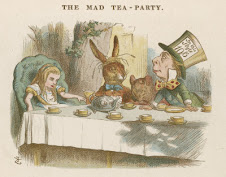While there is little doubt that there are cost (and legal) barriers to the creation of a third party, they are not the major barriers to a third (or fourth, etc.) party in the United States. The main barrier is math.An associate professor of political science, Taylor relies on Duverger's Law to make his case, reasoning that a competitive third party is a virtual impossibility because of the "incentive structure" within any first-past-the-post electoral system. He uses as his example the results of the recent special election in Hawaii, which Republican Charles Djou won with just under 40% of the vote, defeating Democrats Colleen Hanabusa and Ed Case, who were supported by 31% and 28% of voters, respectively. Taylor writes:
the introduction of three competitive candidates meant that, by definition, the winner would likely win with less than majority support. It is also a situation in which over the long haul the clear strategic choice for the Hanabusa “party” and the Case “party” would be to work together next time so as to capture the ~58% that they appear to represent.While Taylor assumes for the purposes of his argument that each of these candidates represents a different "party," he fails to maintain the assumption in his analysis, thus drawing the faulty conclusion regarding the "clear strategic choice" for the Hanabusa and Case "parties." The only reason this might appear to be a "clear strategic choice" is because Hanabusa and Case are both Democrats, and do not actually represent different parties, which, one assumes, would maintain different political platforms, governing philosophies etc. Taylor's analysis in favor of the two-party system results from a base duopolist logic, not the continued assumption of a competitive multi-party race, as he pretends.
However, this is not the most deceptive aspect of Taylor's argument. The professor's main criticism of competitive multi-party electoral contests is that "the majority of the voters [have] a preference other than the winner." Indeed, in this election, 3 out of 5 voters did not cast a ballot for the winner. But let's take a closer look at the "math" involved. Though still embarrassingly low, voter turnout was actually quite high in this race, at least in terms of US standards. The Hawaii Board of Elections reported 54% voter turnout in the special election for Congressional District 1. Republican Djou received 67,610 votes, Democrat Hanabusa received 52,802, and Democrat Ed Case received 47,391; there was a total of 171,417 votes cast out of 317,337 registered voters.
Compare these results with those from the previous special election in the state, which took place in 2003 in Congressional District 2. This race boiled down to a two-person contest with the remaining 25% of votes dispersed in support of various alternatives. Democrat Ed Case won with 43.2% of the vote, soundly defeating his nearest rival, Democrat Matt Matsunaga, who received 30.2% of the vote, according to the Hawaii Board of Elections.
Thus Ed Case won the 2003 special election with more support (43.2%) than Republican Djou received in this year's special election (39.4%), when the latter beat both Case and Hannabusa. According to Taylor's logic above, the former race ended with a superior outcome, since the winner obtained a greater percentage of support, inching closer to an outright majority. However, almost 4 out of 5 registered voters did not cast a ballot in the 2003 election! Only 76,328 voters out of 348,342 participated in the election for a grand total of 21.9% voter turnout.
To summarize: in the competitive three-way race in 2010, the winner won with the support of 40% of 54% of registered voters; in the two-person one-party race in 2003, the winner won with the support of 43% of 20% of registered voters. Consider this comparison a different way. In the competitive three-person race, Charles Djou received 67,610 votes and won with 40% support. In the two-person one-party race, only 76,328 people cast a ballot at all! Democrat Ed Case won the election with the support of less than 10% of registered voters, while Republican Charles Djou won his election with the support of over 20% of registered voters.
It is therefore self-contradictory, if not outright deceptive, to argue against multi-party races on the basis of majoritarian principles as Professor Taylor does in the post referenced above. As a simple example, assume a district with 100 registered voters. One year there is a two-candidate contest. 11 voters cast a ballot for one of them and this candidate wins with 55% of the vote, because only 20 voters cast ballots. The next cycle, there is a three candidate contest, and 60 voters cast ballots. The winner is victorious with only 36% support, but receives 22 votes. According to Taylor's confused logic, the candidate who received 22 votes has less support than the candidate who received 11. A fine example of duopolist delusion.







No comments:
Post a Comment